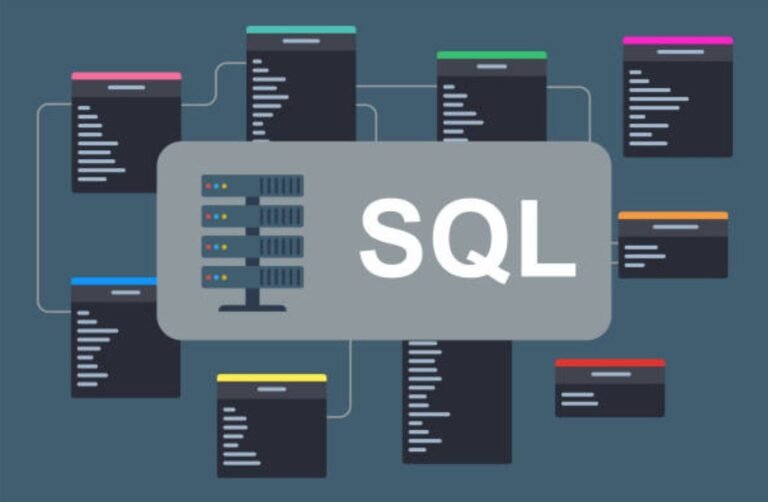Structured Query Language (SQL) serves as the backbone for managing and querying data within databases. Whether you’re a data analyst, developer, or simply learning the ropes of database management, understanding SQL’s core features like joins and subqueries is essential. These techniques help with efficiently retrieving and manipulating data, enabling you to handle complex queries without complications. Joins and subqueries offer powerful tools for connecting and processing data from multiple tables, ultimately providing meaningful insights from relational data models.
What Are SQL Joins?
Joins in SQL are used to combine rows from two or more tables based on a related column between them. This feature is particularly useful when working with relational databases, where data is distributed across multiple tables to avoid redundancy and maintain data integrity. By using joins, you can link these tables and bring together the information you need in a single query.
Joins come in various types, each serving specific purposes based on the relationship between the tables. Here’s a breakdown of the most common join types:
1. Inner Join
An inner join fetches records that have matching values in both tables. It excludes any non-matching rows, focusing only on the intersection of data. For example:
“`
SELECT
employees.name, departments.name
FROM
employees
INNER JOIN
departments
ON
employees.department_id = departments.id;
“`
The above query retrieves the names of employees and their respective departments, based on a shared department_id.
2. Left Join (or Left Outer Join)
A left join returns all records from the left table, along with the matching records from the right table. If no match is found, NULL values are returned for the right table’s columns.
“`
SELECT
employees.name, departments.name
FROM
employees
LEFT JOIN
departments
ON
employees.department_id = departments.id;
“`
Here, you’ll get a list of all employees, even those who are not assigned to any department.
3. Right Join (or Right Outer Join)
The right join is the reverse of the left join. It retrieves all records from the right table, with matched records from the left table. Rows without a match in the left table will show NULL values.
4. Full Join (or Full Outer Join)
A full join combines the results of both left and right joins. This means all rows from both tables are included, with NULL values appearing wherever a match is absent.
“`
SELECT
employees.name, departments.name
FROM
employees
FULL JOIN
departments
ON
employees.department_id = departments.id;
“`
5. Cross Join
A cross join returns the Cartesian product of two tables. Every row in the first table is combined with every row in the second table. This type of join is rarely used unless intentionally seeking all possible combinations of data.
Introduction to SQL Subqueries
Subqueries, often referred to as “inner queries” or “nested queries,” are queries embedded within another SQL query. They’re used to perform intermediate calculations or data retrieval that’s necessary for the main query to execute. Subqueries are often found in SELECT, INSERT, UPDATE, or DELETE statements and provide a modular way to break down complex SQL logic.
Where to Use Subqueries
Subqueries can be used in the following scenarios:
- Inside a WHERE Clause
You can use a subquery to filter data based on the result of another query.
“`
SELECT
name
FROM
employees
WHERE
department_id IN (
SELECT
id
FROM
departments
WHERE
location = ‘New York’
);
“`
This query fetches the names of employees who work in departments located in New York.
- Within a FROM Clause
Subqueries in the FROM clause are also called derived tables. These are useful when you need to temporarily create a table-like structure for additional processing.
“`
SELECT
department_name, employee_count
FROM (
SELECT
departments.name AS department_name, COUNT(employees.id) AS employee_count
FROM
departments
LEFT JOIN
employees
ON
departments.id = employees.department_id
GROUP BY
departments.name
) AS derived_table
WHERE
employee_count > 10;
“`
- Using Correlated Subqueries
Unlike regular subqueries, correlated subqueries depend on outer query values to execute. These are evaluated row-by-row.
“`
SELECT
name
FROM
employees AS e1
WHERE
salary > (
SELECT
AVG(salary)
FROM
employees AS e2
WHERE
e1.department_id = e2.department_id
);
“`
This query finds employees earning more than the average salary in their respective departments.
Key Differences Between Joins and Subqueries
While joins and subqueries can achieve similar results, their use cases often differ based on efficiency and readability.
|
Feature |
Joins |
Subqueries |
|---|---|---|
|
Performance |
Usually faster, especially for large datasets. |
May be slower for large and complex datasets. |
|
Readability |
Easier to read when combining multiple tables. |
Great for breaking down step-by-step logic. |
|
Flexibility |
Limited to combining tables. |
Versatile and can perform independent calculations. |
Choosing the right approach depends on your specific use case and database optimization needs.
Tips for Mastering Joins and Subqueries
- Understand Relationships
Knowing how tables are connected in your database is critical. Analyze primary and foreign keys to design accurate queries.
- Use Aliases
Assign meaningful aliases to tables and columns to make your queries cleaner and more readable.
- Optimize for Performance
When working with large databases, pay attention to indexing and query execution plans to improve performance.
- Practice with Real-World Scenarios
Apply joins and subqueries to real datasets to understand their utility in solving practical problems.
- Experiment with Nested Queries
Try combining joins with subqueries to handle advanced cases, pushing the boundaries of your SQL skills.
Final Thoughts
Mastering SQL joins and subqueries empowers you to interact with complex relational databases effectively. These tools are indispensable for extracting meaningful information, ensuring better decision-making through data-driven insights. By practicing and exploring different scenarios, you can refine your understanding and become capable of solving even the most challenging SQL problems. Keep learning, and you’ll soon find yourself proficient in writing optimized and elegant queries for any task.

